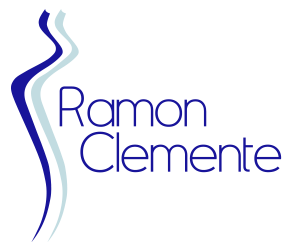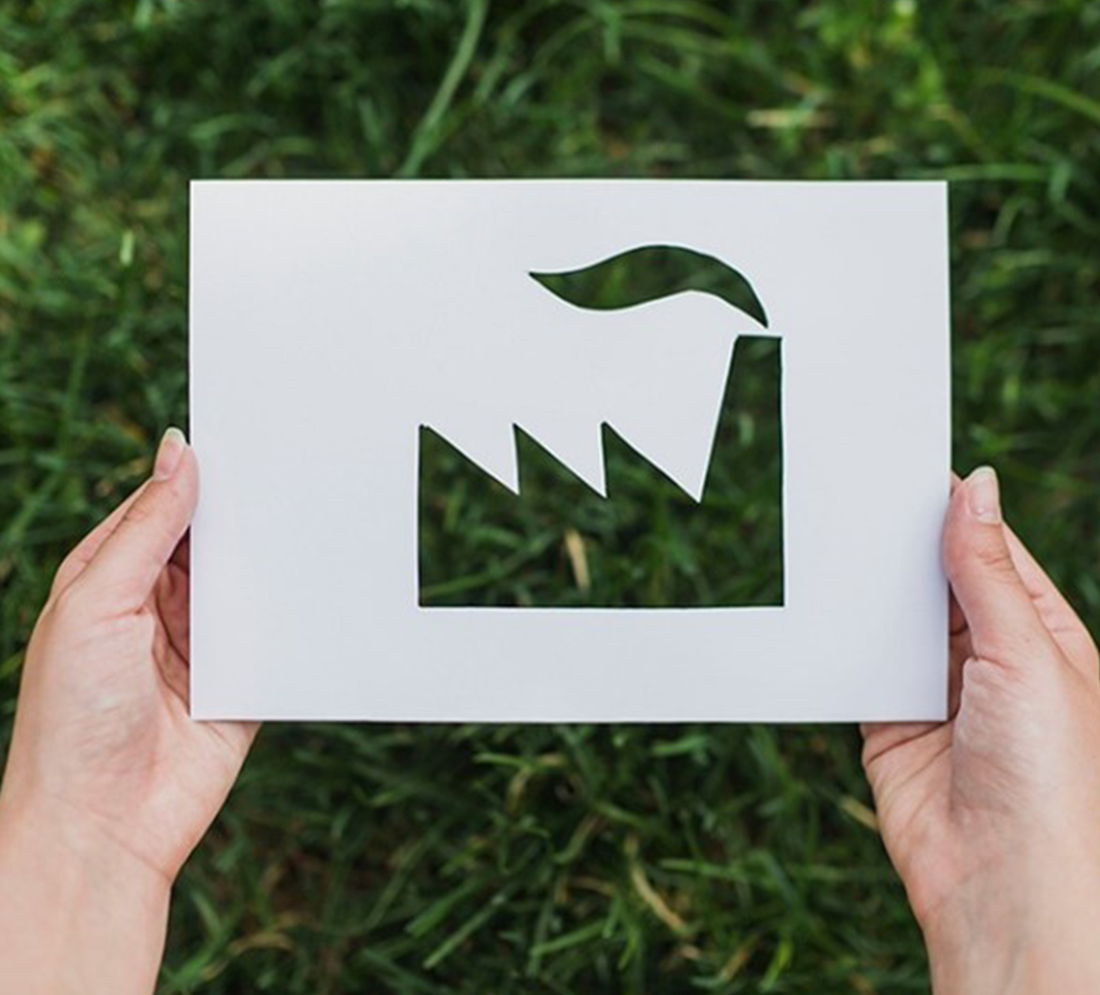
What is Post-Consumer Recycled Glass?
PCR (Post-Consumer Recycled) is post-consumer recycled material, in this case, glass, retrieved from municipal waste collection services. This means that this material has passed through an end consumer.
What is the difference between PCR and PIR?
PIR glass (Post-Industrial Recycled glass) is recycled glass obtained from the refuse of other glass-producing companies and factories.
On the other hand, we have our own In-house Glass, which is retrieved after being rejected for quality reasons or during changes in models and then reintroduced into the process.
In the case of PCR, some companies collect and treat glass containers and then sell the cullet to glass factories that use it in the production process, just as they would use any other raw material. PCR glass can come in different colours and various quality ranges, which may vary depending on how it was collected and treated (sorting and crushing).
Differentiating between these two concepts is of great importance since PCR is actually a product that has been consumed and then reused. Post-Consumer Recycled Glass (PCR) contributes to the circular economy of glass.
Commitment to the Environment by using post-consumer recycled glass
The glass bottle industry uses ‘cullet’ – a generic word for recycled glass used in the production process – as a raw material to produce new bottles and jars. The reason behind this is its high environmental benefits:
–Energy savings: melting recycled glass – which has been melted previously – requires less energy than melting virgin raw materials.
–Less extraction of virgin raw materials: 1 kg of recycled glass replaces around 1.2 kg of virgin raw materials. Less use of non-renewable resources such as silica sand, calcium carbonate, sodium carbonate, etc.
–Reduced CO2 emissions: less energy consumption and replacement of recycled glass with materials containing carbonate (which decompose into CO2 and oxides).
–Contribution to the circular economy: glass is a material that can be recycled infinitely and is key to the emerging circular economy. With PCR glass, it is possible to ‘close the loop’, as it can be and has been recycled.
A well-known industry standard states that every 10% increase in recycled glass over the whole glass composition can result in 2.5-3% energy savings.
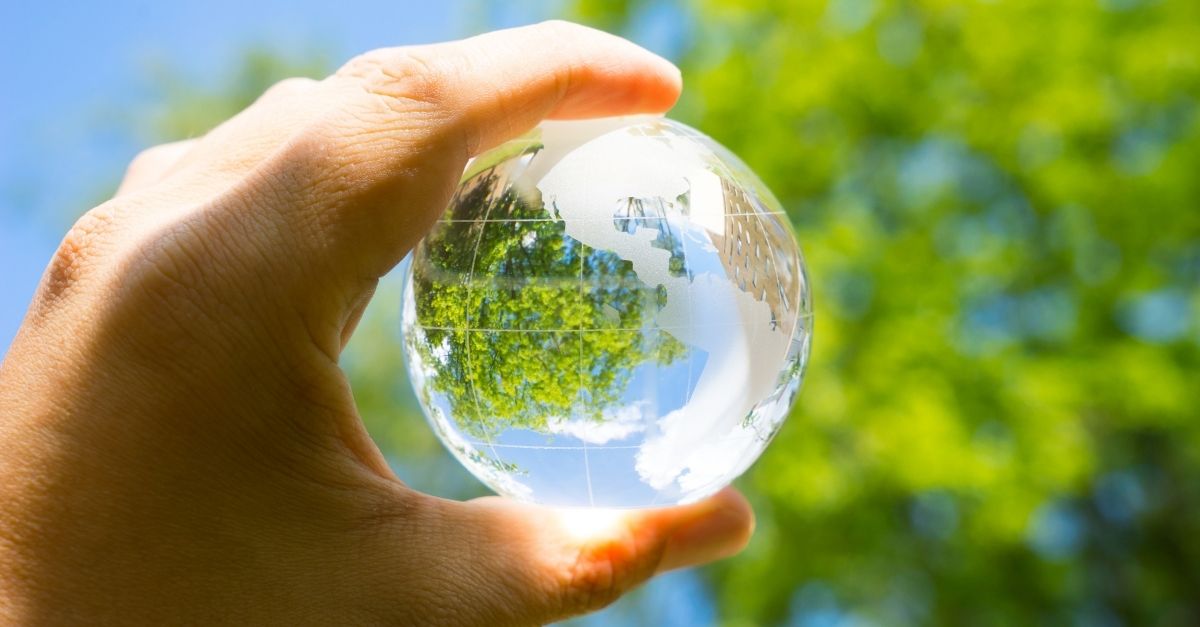
Glass recycling certificates
Since March 2020, Ramon Clemente has held the RCS (Recycled Claim Standard) certificate
It is a Standard used to effectively track recycled raw materials throughout the entire supply chain. RCS verifies the presence and quantity of recycled raw materials in a finished product. This enables third parties to fully assess and verify the chain. In our particular case, RCS certifies the percentage of recycled glass in a product – at least 5%.
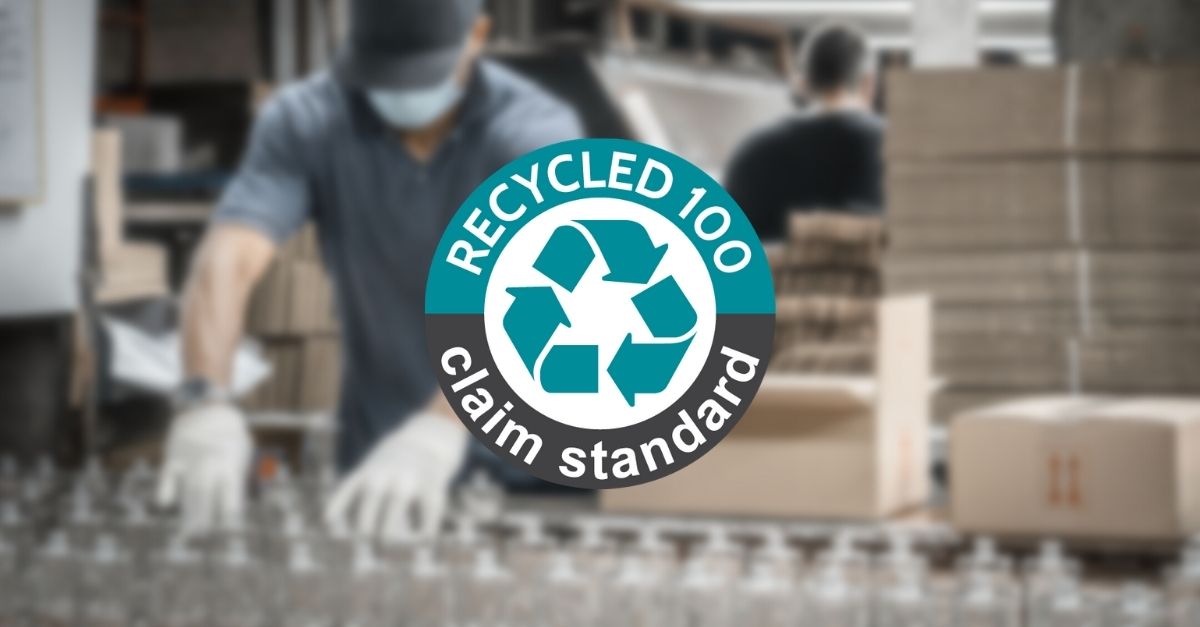
The manufacturing process of our PCR glass
The production process carried out in Ramon Clemente follows a continuous and linear path. It starts with the loading of the raw materials in the melting furnace. Then, the glass gob is formed, and the bottle is shaped. The final stages are the annealing process and quality control.


Once the bottles come out of the lehr at room temperature, they are checked following the quality parameters. The bottles are selected according to the standards agreed with the customer.
Obtaining high percentages of PCR (30%) is not a simple process, as the furnaces must be specially prepared to gradually achieve the desired PCR percentage. Typically, the glass currently produced on the market includes 3-10% PCR. For this reason, reaching 30% PCR in our factory’s production line poses a challenge and is a major leap.
Quality of the finished product containing Post‑Consumer Recycled Glass
To assess the quality of the finished PCR product, we rely mainly on 3 aspects:
– Colour
– Heavy metal content
– Dimensional stability/strength
Using external recycled glass in the composition – even if it is clear after the treatment plants separate it – can leave traces of coloured glass (with a much higher iron and heavy metal content). This means that the finished glass will subsequently suffer colouring variations, which are corrected using decolourising agents.
Regarding the heavy metal content: at Ramon Clemente, glass with 10% PCR contains considerably lower ratios than those regulated by the glass packaging Standards.
Lastly, our 10% PCR glass achieves the same dimensional tolerances and shatter resistance as ‘ordinary’ glass.
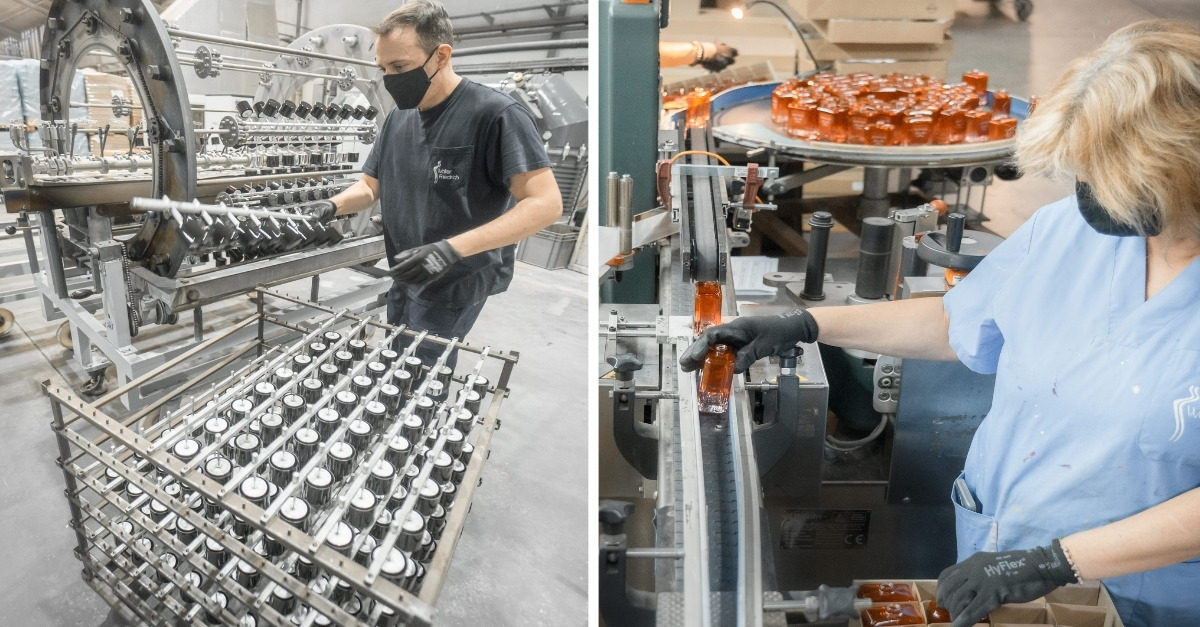
Our challenge: to produce 30% PCR glass bottles in 2021
At Ramon Clemente, we have created an environmentally-friendly line especially for glass production: the ECOLINE. This way, we double our commitment to the environment. We will be one of the first manufacturers to produce bottles – both for standard or exclusive products – with a high PCR percentage. You can check out our ECOLINE here
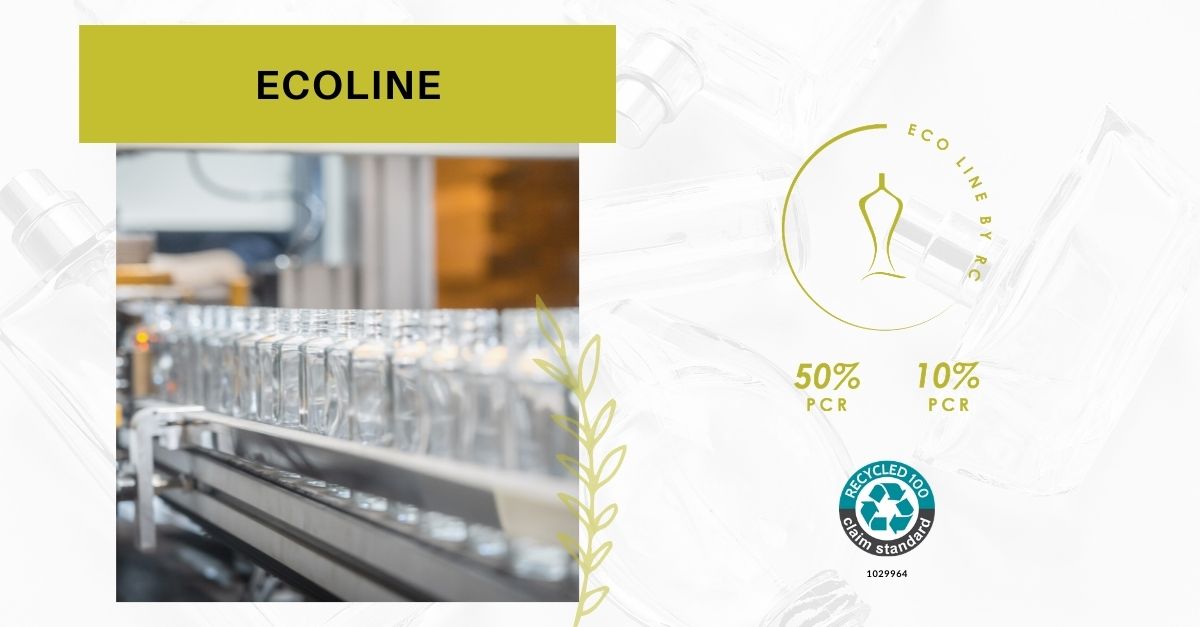
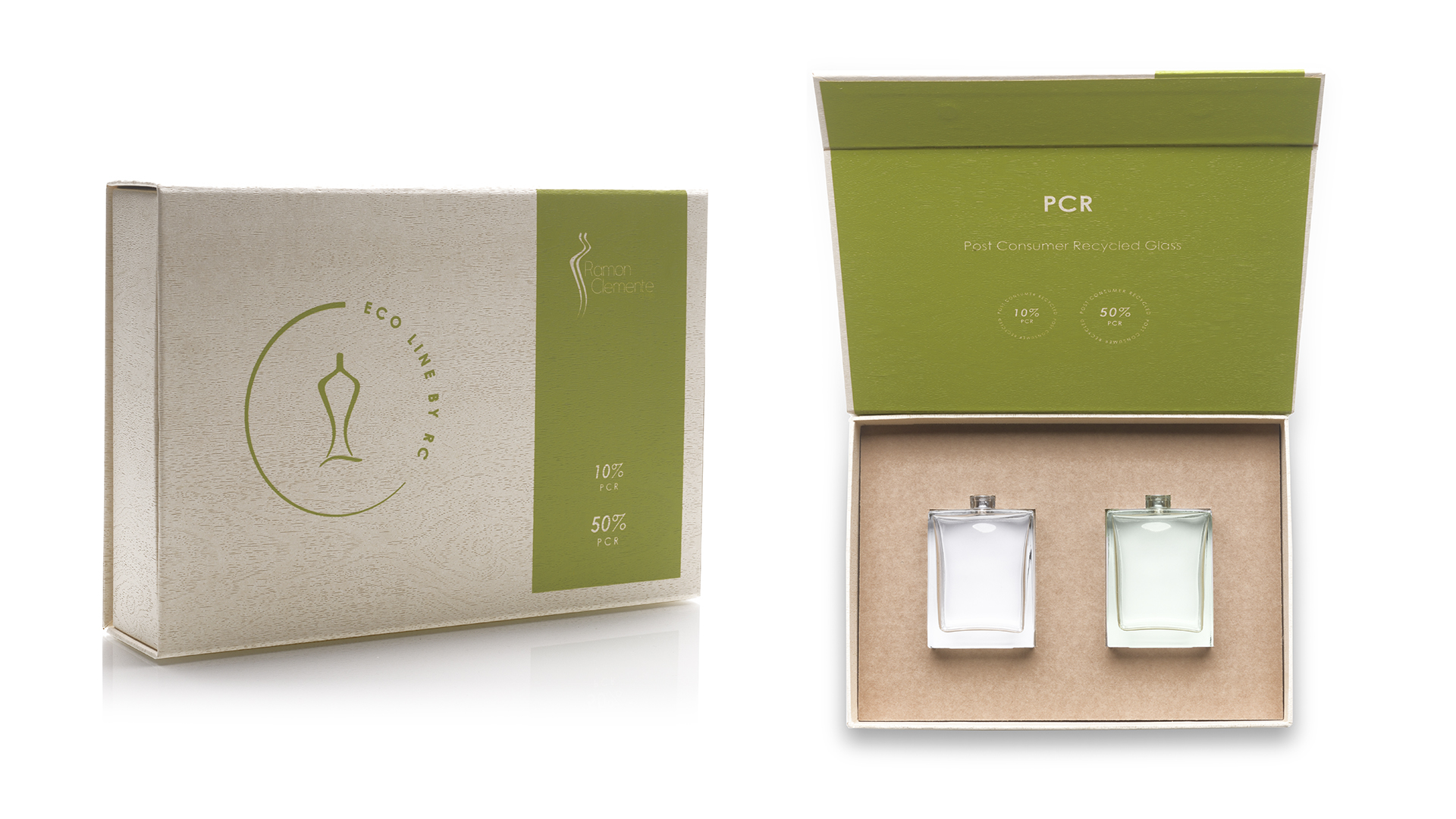
Five years from now, sustainability will be key in defining the leading luxury brands of the future.
This commitment between the manufacturer and end customer is crucial when it comes to playing our part in the market with the utmost environmental sensitivity. At Ramon Clemente, we are fully committed to the use of recycled materials. Our ECOLINE, with 10-50% PCR, is a clear example of this – we recycle glass and give it a new life.
